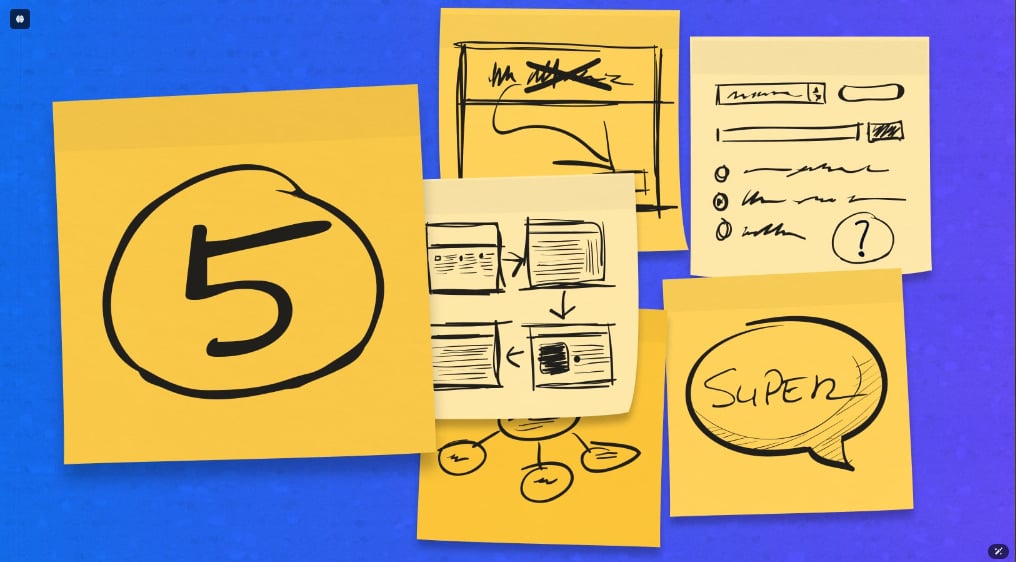5 Ways to Improve Agile Team Communication & Trust
Trust is crucial for agile teams. And it begins with good communication, which is essential for agile development teams to thrive.
How to improve Agile team communication
Agile development has tight and frequent deadlines — especially with a Mendix project where the deadlines are usually 1-2 week sprints. When companies choose agile development after focusing on waterfall or other restrictive development methodologies, it requires a complete shift in mindset.
Change is challenging and has a lot of learning pains. However, the change is totally worth it when you see the ROI. With agile development, it is possible to have a product out the door and make an impact rapidly within weeks or months — rather than years or decades.
The best way to handle the challenges of tight deadlines and multiple stakeholders is to communicate effectively with all team members. Here are five recommendations to improve agile team communication and build trust.
1. Define roles and goals at the beginning
A lot of miscommunication starts at the very beginning of a project.
Each project should have a clear kick-off with roles and goals defined. During the kick-off, it’s important to discuss what the various roles will be and the expectations for and from team members.
There should be an escalation overview highlighting how to resolve problems when they arise. The kick-off should serve as a guide for the team, but it should not be rigid or set in stone.
Remember: Changes are bound to happen, and the team should be agile and adjust to change.
2. Encourage questions
Always encourage your team to ask questions. Never dismiss a question or make someone feel inadequate for asking questions.
Questions lead to clarifications, discovery, and sometimes process improvements. Therefore, it’s important to encourage your team to ask questions and clarifications. Remember, it’s okay not to have the answers and discover them along the way.
3. Make mistakes
People who have never done agile before or are just learning the development tools are expected to make mistakes.
Mistakes should be encouraged and openly discussed – especially at the beginning of a project. Mistakes force us to learn and become better. However, a lot of people are afraid of making mistakes.
In agile development, small mistakes that could be fixed in a couple of minutes or a day turn into mountains that delay release dates by weeks or months. Whatever you do, don’t brush mistakes under the rug. How the team handles mistakes could be a golden opportunity to bring the team closer together.
4. Intro-retrospectives
Retrospective meetings are critical to opening up communication channels.
During the introspective meeting, the team should focus on what went right and, most importantly, what went wrong. The goal is to be productive and not spend the whole time pointing fingers or complaining about things.
Come up with solutions and suggestions on how to improve and constantly iterate on it. Even after a fully successful sprint, it’s important to debrief with team members in the agile ceremonies.
5. Feedback
Feedback is the best thing to give and receive. Therefore, start by giving feedback often and to everyone.
Did someone handle something well? Give them positive feedback on what they did and the impact it made. Did they miss a deadline? Why? Give them feedback on how to improve.
If your feedback is on how people can improve, literally state, “My goal is to help you improve, and I’ve noticed [what the problem is]; here is what we can do [suggestions on improvements].” Not all feedback will work the same with everyone. However, it is a must in order to improve; do not shy away from giving or receiving it.
Follow these tips to improve agile team communication, and you will have a stronger and better-functioning team.
Agile doesn’t have to be scary. It’s just about improving your process.
- Leave Request – Quản lý nghỉ phép thông minh trong một mô-đun CRM duy nhất
- Epicor Asia & Techworld Solutions Vietnam Chính Thức Công Bố Quan Hệ Đối Tác Chiến Lược, Mở Rộng Hệ Sinh Thái Giải Pháp Tại Việt Nam và Khu Vực
- Cloud-Native Applications: Examples, Benefits and Development Methods
- 5 Benefits of Developing with Containers
- What Are the Goals of an Application Portfolio Manager?
Bài viết cùng chủ đề:
-
Leave Request – Quản lý nghỉ phép thông minh trong một mô-đun CRM duy nhất
-
Techworld Solutions Đồng Hành Cùng UTE Trong Đào Tạo Nhân Lực Chất Lượng Cao
-
Microsoft Office chính thức chuyển thành Microsoft 365
-
Epicor Asia & Techworld Solutions Vietnam Chính Thức Công Bố Quan Hệ Đối Tác Chiến Lược, Mở Rộng Hệ Sinh Thái Giải Pháp Tại Việt Nam và Khu Vực
-
Chúc mừng đội ngũ Microsoft!
-
Giá trị của Microservices Doanh Nghiệp với Low-Code
-
Sự Tiến Hóa Tiếp Theo Của Mendix Cloud: Đón Nhận Kubernetes Để Xây Dựng Nền Tảng Sẵn Sàng Cho Tương Lai
-
Optimizing Production with Epicor ERP – Specialized Solutions for Complex Industries
-
Addressing the Knowledge Gap
-
AI-Assisted Development in Action with Mendix
-
Empowering Mobile Innovation
-
How to Upgrade Legacy Systems to Compete in the Cloud Age
-
TECHWORLD SOLUTIONS VIỆT NAM VÀ ĐẠI HỌC SPKT ĐÀ NẴNG KÝ KẾT HỢP TÁC TRIỂN KHAI TRUNG TÂM NGHIÊN CỨU & ĐÀO TẠO CÔNG NGHỆ SỐ
-
How to Architect Your Mobile Customer & Employee Experiences
-
PVI Gia Định Partners with Techworld Solutions Vietnam to Revolutionize Insurance Management
-
ESEC Group Partners with Techworld Solutions Vietnam to Implement Microsoft Dynamics 365 ERP

















